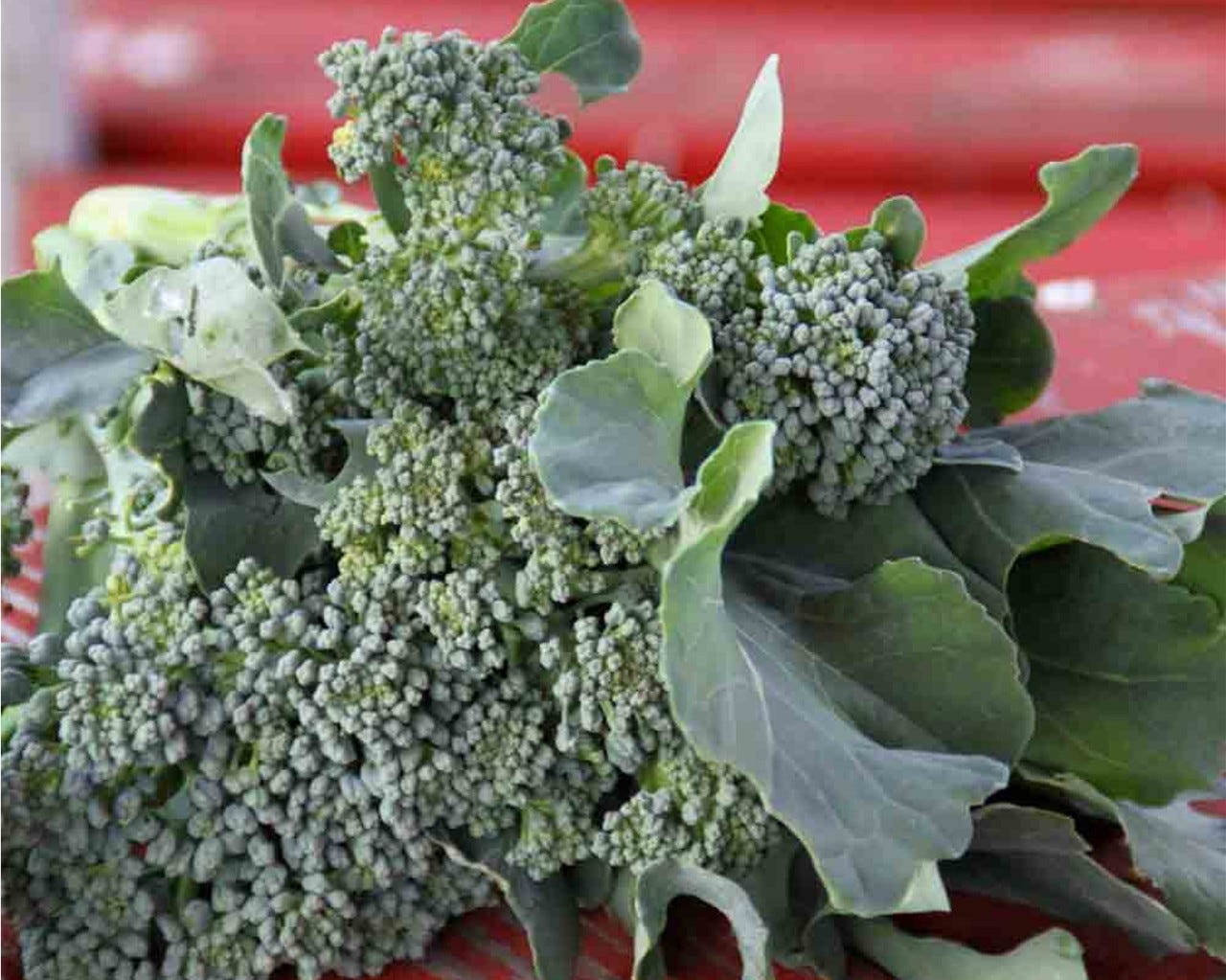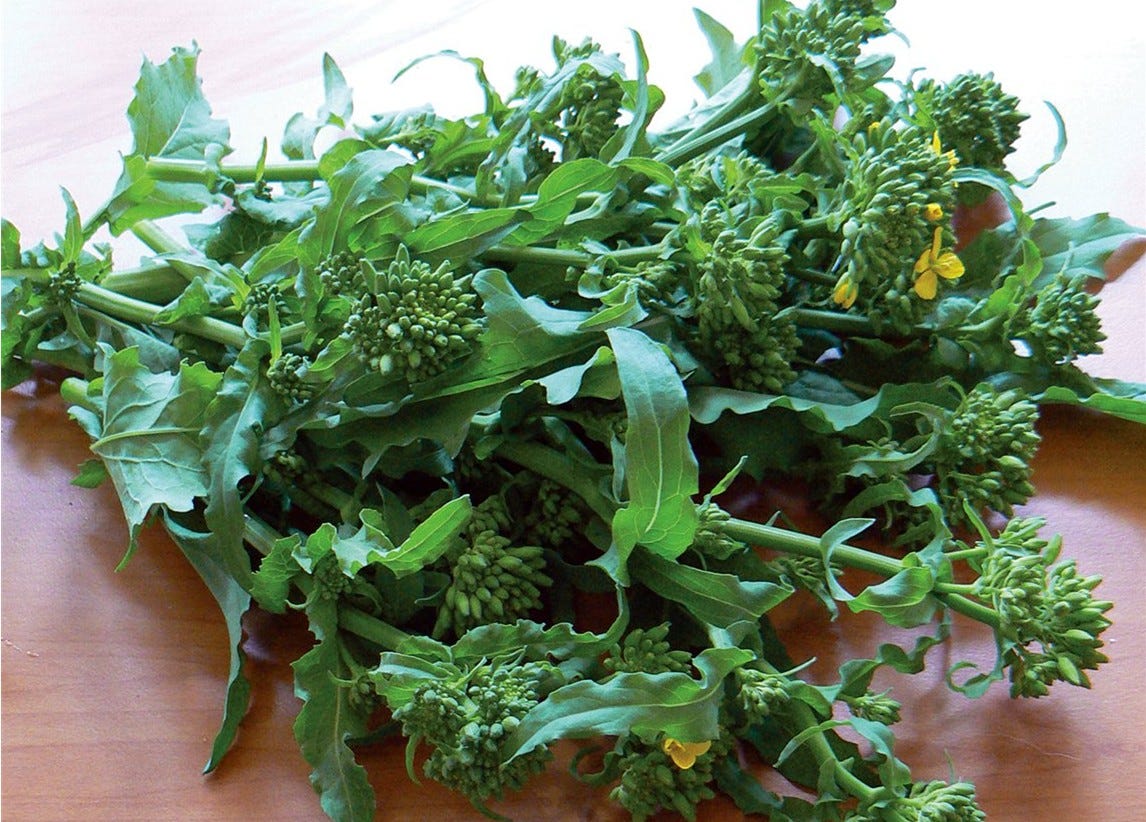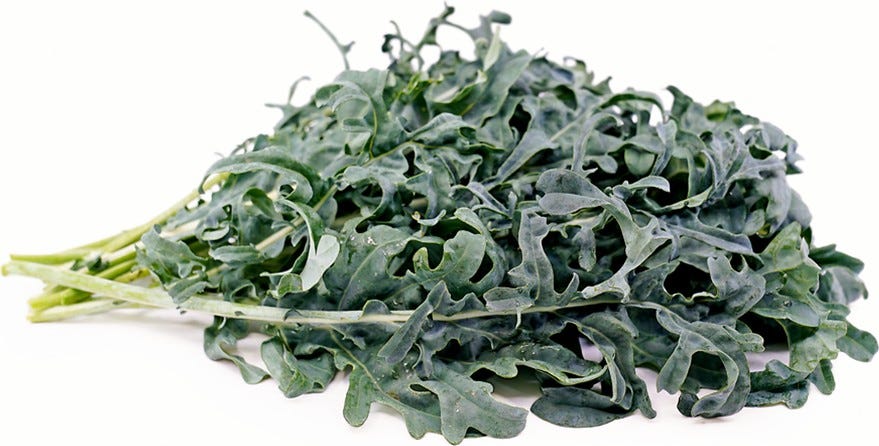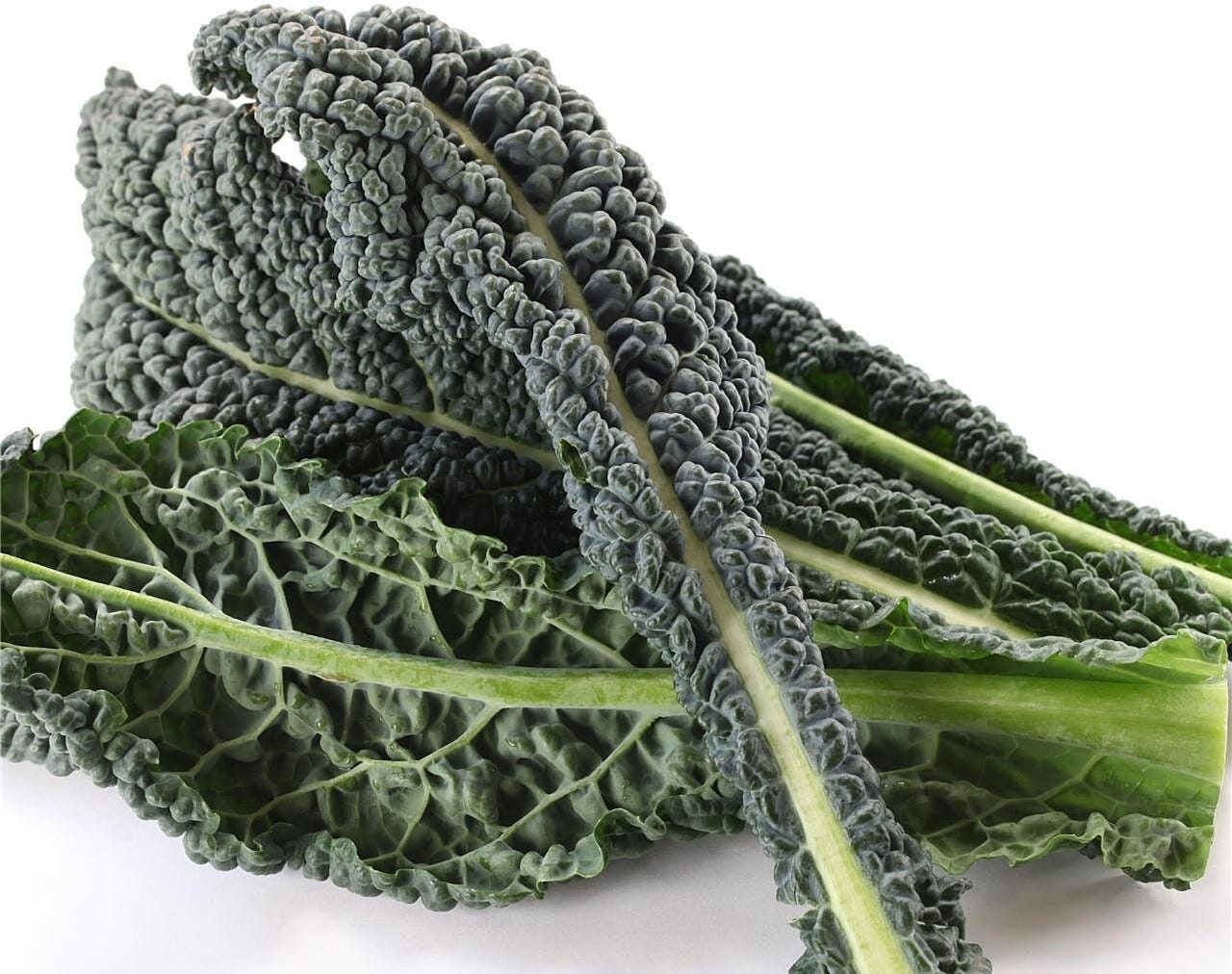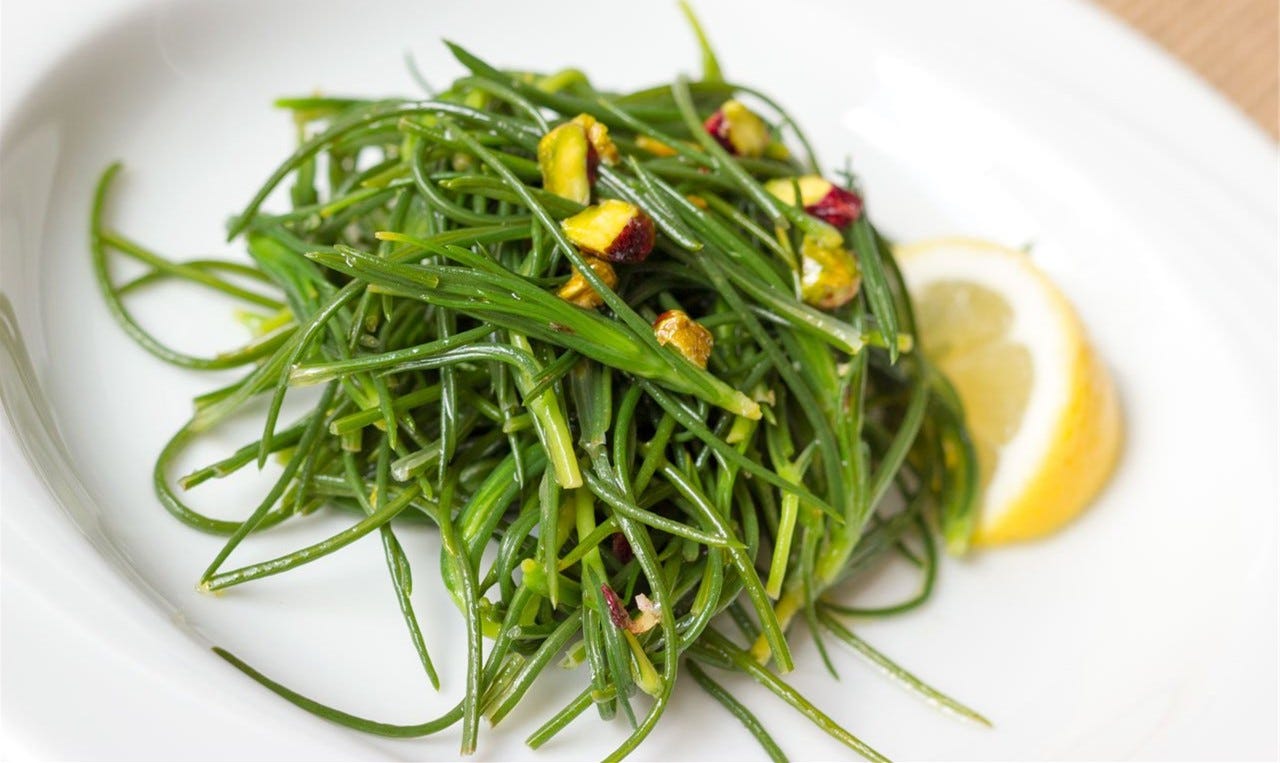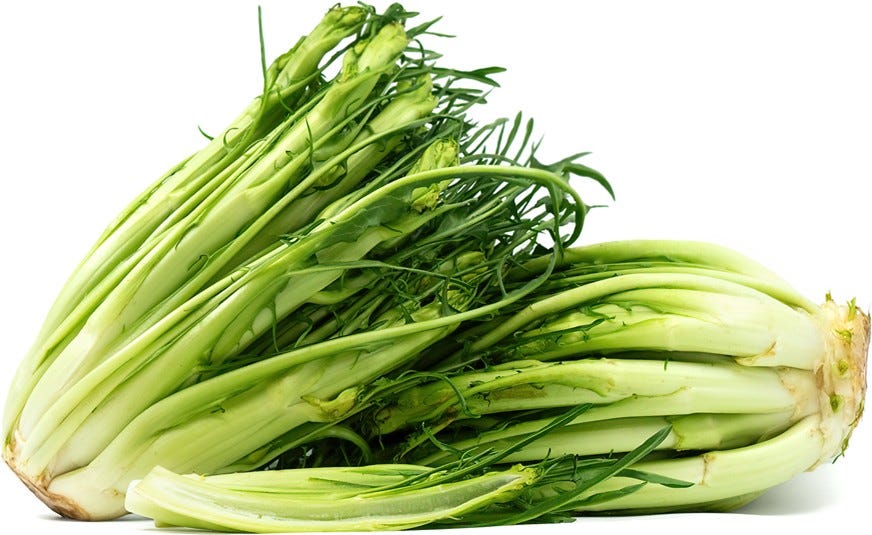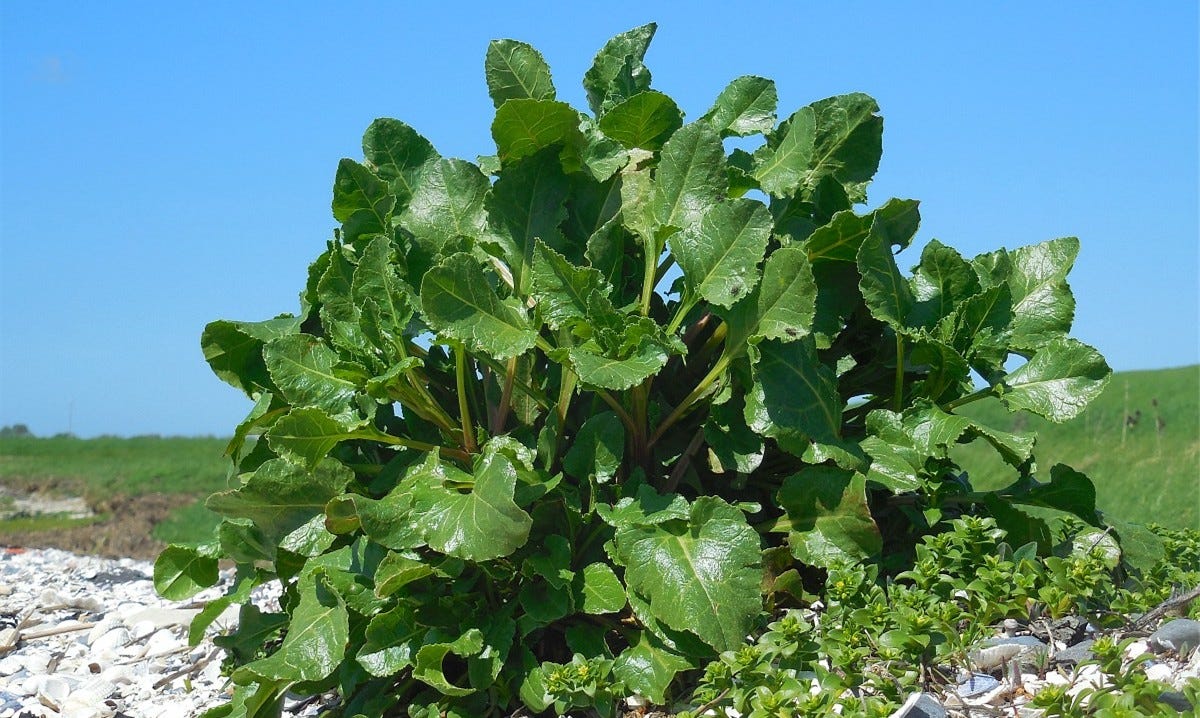ITALIAN VEGETABLES DAL ORTO – Part 1
"From the Garden" — Basics and Specialties You Can Grow in the Cool Season
Part 1 of 3: the flower heads and leafy things
Much of Italy has developed its horticulture (and culture) around its Mediterranean climate. Almost all of the plants covered here, most familiar while some not-so-much, are native to Italy (primarily the coasts) and/or were initially developed as farm and garden edibles there. As such, these vegetables do their garden growing during the same conditions that Mother Nature gave them: cool (not COLD) weather and seasonal rain (fall through winter and into spring). Whether you live in a Mediterranean climate or not, you’ll need to grow these plants when your climate provides them with cool weather and you’ll need to provide them with that water if rainfall isn’t enough. Pretty simple. For timing, plan on:
fall planting for fall-winter-spring harvest in the cool-winter south,
spring planting for cool spring harvest in the north, and
in the middle zones, spring sowing/planting for spring and early summer harvest and even fall sowing/planting for fall and just into winter harvest.
CAULIFLOWER (calvofiore) [Brassica oleracea Botrytis Group]. Kind of an “arrested development” vegetable that arose from broccoli, via a handful of barely perceptible gene changes, about 2,500 years ago. More down to earth: you’ll get better heads in the garden when nighttime temperatures stay at about 50°F for a while.
Culinary: Cauliflower took on a whole new life in the last few years, as a substitute for white rice, pizza crusts, and even “steak.” The Italian ways are plenty: it’s a perfect antipasti (especially to dip in bagna cauda), it’s good in many pasti, and great as part of salads (which might include broccoli, pancetta, and olives). There’s polpette di cavolfiore (cauliflower meatballs!), steamed cauliflower, baked as in cavolfiore gratinato, and zuppa di cavolfiore. If you don’t like your cauliflower so healthy, fry it as fritters (cavoloflore frittelle).
In Sicily, a common way to serve it is to roast it first, then toss it with sultanas (dried Thompson Seedless grapes), capers, breadcrumbs, parsley, toasted pine nuts, and lots of lemon; add almost all those ingredients to pasta and it’s arriminati. “Drown” the cauliflower in red wine, anchovies, onions, Pecorino cheese, and olives, then cook it with pasta, and it’s another Sicilian dish, pasta affogato (affogato meaning drowned). In Piedmontese cuisine, it is served “cavour-style,” in which the cooked florets are seasoned with butter, chopped boiled eggs, and anchovies. Cauliflower is also traditionally included in a sotto aceto misto (mixed pickled vegetables; sotto aceto literally means “under vinegar”); it’s usually offered as an antipasto or picnic side and what we in the U.S. call giardiniera. Here’s my recipe for “SOTTO ACETO MISTO.”
Personal Note: My Sicilian mother made a rustic rice and cauliflower dish, kind of like risotto di cavolfiore — pure comfort food (or a way to sneak something broccoli-like into a dish for kids).
Varieties: Aside from so many white varieties (which were once grouped in their own botanical category: di Jesi)…
Purple (beautiful and extra nutritious with antioxidants) -- ‘di Sicilia Violetto’ (‘Purple of Sicily’)
Green -- ‘Cimone’(‘Macerata’ or Cauliflower of Macerata; heritage/heirloom); this color variation originally represented its own botanical grouping (Maceracta). Plenty of other green cauliflowers have followed including the modern day cauliflower x broccoli hybrids (at least one group trademarked as “Broccoflower” and often marketed as “rare”).
Brocccolo Romanesco — chartreuse, a highly geometric conical formation of the head. Although often called a “broccoli,” it’s an ancient form of cauliflower (it had to be around the time of Fibonacci, 1200-ish, right?). Originally in its own separate agricultural/botanical group (Romanesco).
Culinary: With spaghetti, garlic, olive oil, and chili pepper it’s a simple dish (pasta alla Romanesca). In Sicily, Romanesco can be used in pasta the same as with cauliflower arriminati, and tossed with the raisins, etc. Or make it simply by tossing it in a skillet with plenty of olive oil, garlic, and anchovies; add chili flakes and a short pasta and it’s pasta e (Romanesco) broccoli. Nowadays, a fine restaurant would make tagliatelle with Romanesco, anchovies, and burrata.
Varieties: ‘Celio’, ’Natalino’, ‘Minaret’, ‘Ottobrino’ ‘Precoce’, ‘Puntoverde’, ‘San Giuseppe’, ‘Veronica’.
“broccoli di Torbole” (Brassica oleracea, originally B. o. var. botrytis var. “cymosa”). This is a particularly unique broccoli-like, albeit white, cauliflower grown in Northern Italy, in only two main areas around Lake Garda. It’s a sprouting cauliflower with a crown more broccoli-like in size and shape. Something for tourists, not gardeners.
There are other forms of “sprouting cauliflower” similar to broccoli de Torbole that are, however, available in the U.S. (and elsewhere). One is called PERENNIAL BROCCOLI or SPROUTING BROCCOLI, albeit technically a cauliflower (botanically/horticulturally, this specific type is sometimes called Brassica oleracea var. “asparagoides”). It produces one small central cauliflower-like head and a number of smaller broccoli-like spears in early spring. Although named “perennial,” it is usually short-lived. ‘Nine Star’ (or, commonly, “nine star broccoli”) is one available form; it’s an old English variety that is purple. Two new hybrids: ‘Fioretto’ (white) and ‘Murasaki Fioretto’ (purple-ish).
BROCCOLI [Brassica oleracea Italica Group]. Several landraces (= somewhat variable) have been suggested as potential ancestral types of the whole italica group: the highly branching ‘Broccolo Nero’, ‘Mugnoli,’ from the Salento region , and a Sicilian landrace, ‘Cavolo Broccolo Calabrese Tardivo,’ the progenitor of today’s typical broccoli as well as many sprouting (true) broccoli.
Culinary: Probably most popular is a pasta dish with broccoli, olive oil, and a bit of lemon, which is usually quite simple, but it may also include garlic, peperoncini (dried chili flakes, NOT the pickled stuff in jars), Pecorino or Parmigiano-Reggiano, a Sicilian salsiccia (sausage), and even anchovy. Can sometimes include cauliflower and chicken stock. In Molise, THE pasta for broccoli is cavatelli. The broccoli can be steamed in advance and added at the last minute or it can be cooked with the pasta, in a minimum amount of water, to create a sauce, of sorts. The same ingredients, broccoli et al, are sauteed for a quick and easy side dish (and YUM). Broccoli goes into soufflés, frittata, minestre/minestrone, focaccia, frittelle, gratin.
Variety (in addition to those mentioned, above, as ancestors): ‘Natalino’ (“Calabrese Early”), an Italian broccoli most like typical American broccoli. (The name “Natalino” has also been used for a Romanesco-like cauliflower in America but instead is called a broccoli.)
Sprouting Broccoli. If kept harvested and watered well, can produce for two or three years. Harvest the main crown first.
Varieties: ‘de Ciccio’, ‘Calabria’ (or ‘Calabrese’, “Italian Green, “ “Calabrese broccoli”; heirloom/heritage, from the original landrace sprouting type), ‘a Getti di Napoli’, ‘Ramosa Calabrese’ (heritage). The term “broccolo da ricacci” refers to a purple form.
BROCCOLI RAAB, RAPINI*, more accurately “CIMI DI RAPA” (literally “turnip tops”), but also called broccoletto [Brassica rapa Broccoletto group; = flowering-headed turnips].
*Rapini generally refers to the over-wintered plants, those harvested in winter or earliest spring (in mild winter areas, of course).
Culinary: In much of Italy, especially in Puglia, kitchens produce a classic and easy dish: pasta con broccoli, and it almost always means THIS type of broccoli. The pasta is usually orecchiette but the “broccoli” can be raab, spigariello (next), or sprouting broccoli (previous). Throw in olive oil, anchovies, and crushed peperoncini (again no, NOT the pickled stuff in jars) and there you have umami and healthy. Cimi di rapa con salsiccia e polenta is what you get when a fine Italian restaurant steams broccoli raab and grills some sausage and puts them both on top of fresh polenta (or maybe just as good, on grilled polenta!) — that’s bitter, fatty, and mooshy and for many, THAT is comfort food..
Varieties: ‘Centoventina’, ‘del Trasimeno’, ‘Folglio di Olivio’, ‘Foglio senza Testa’, ‘Novantina’, ‘Maceratese’, ‘Quarantina’, ’Riccia di San Marzano’, ‘Sessantina’, ‘Toscana’
SPIGARIELLO (also spelled spigarello; also called cavolo broccolo spigariello; leaf broccoli; in Napoli, it’s friarielli; also, another cima di rapa) [Brassica oleracea Italica group] Taste like a very mild broccoli raab, almost sweet broccoli-like (maybe akin to another uncommon Brassica in the U.S., albeit very common in China, gai lan). Leaf shapes vary among varieties.
Culinary: Used traditionally on pizza in Naples, with olives and chili in pasta dishes, or just boiled or sautéed and served as a side dish. A good sub in any broccoli raab dish, especially if you don’t like the smack-you-in-the-face bitterness of broccoli raab.
Varieties: ‘Foglia Ricci’ (cut-leaf foliage), ‘Foglio Liscia’ (big smooth leaves)
Personal Notes: make successive sowings.
Broccolini: An Italian-ate name but a plant not found or eaten in Italy (although “broccolini” would translate to little broccoli. Bred in Japan in the 1990s as a cross (Brassica oleracea var. italica × alboglabra) between broccoli and “gai lan” (Chinese broccoli). Looks very much like some varieties of sprouting broccoli. There is a purple form. Sometimes called “tenderstem broccoli” but to Italianize it even more, it’s appropriated another Italianesque name: “broccoletto” or, plural, “broccoletti” (meaning baby broccoli but a name reserved for broccoli raab).
LACINATO KALE [Brassica oleracea Acephala Group or Brassica oleracea var. palmifolia]. Usually referred to as simply “lacinato” in Italy; also called “Lacinato Toscano” (“Tuscan Kale,”) “cavolo nero” (black cabbage), “nero di Toscana;” DINOSAUR KALE. A cousin to the other kales but more closely related to collards. Long leaves that are rumpled throughout and curled under at the edges.
Culinary: Lacinato kale, like most other kale varieties, is usually blanched first, and then sautéed with other, complementary ingredients (you know the drill: olive oil, lemon, sometimes peperoncini). It is commonly used in pastas and soups, but can also be eaten raw, in a salad. In Campanian cuisine, anchovies are often added. In Tuscan cuisine, lacinato kale is used in ribollita (literally: "reboiled"), a thick, hearty soup-almost-stew with ingredients cooked the day before the meal.
Personal Note: It’s what I put in my Italianized version of Caldo Verde, the Portuguese soup of potatoes, Portuguese sausage, and tronchuda (a kale relative); instead of Portuguese sausage, I use a Sicilian sausage and instead of tronchuda, I use lacinato. “MY CALDO VERDE” recipe.
AGRETTI (aka roscana). [Soda inermis (formerly Salsola soda)]. Agretti is Italian for “little sour one.” Another fun name for this plant: “barba di frate,” which means “friars beard”. A tiny annual plant, with somewhat succulent leaves; will grow in ordinary garden soil but grows happily in coastal, salty sand, as well (maybe too well — it’s invasive in coastal northern California including the San Francisco Bay Area).
Culinary: Just looking at it tells you it’s going to be crunchy (asparagus-like?). Once you bite into it, you’ll pick up the sweet-tart sorrel-like taste up front along with a spinachy-grassy base, and a slightly minerally (salty?) background. Agretti can be eaten raw, chopped and tossed into salads; it can also be boiled, steamed, sauteed and stir-fried. As the simplest of “salads,” agretti is tossed with a dressing of olive oil and lemon. A common dish sautés it with tomato and olives. One very seasonal tradition combines this ephemeral annual vegetable with spring potatoes. A little fancier: fry it with pancetta. The hog-wild version: sauteed with a mix of chopped seafood. Mix it with garlic, olive oil, parsley, and chili flakes (peperoncini) and toss the whole with tagliatelle, fettuccine, pappardelle, o qualsiasi nastro di pasta tu abbia.
Seed might be difficult to germinate (it MUST be fresh; there doesn’t seem to be a lot of work being done on selecting plants to improve this critical quality), but once it’s germinated, it’s off and running.
ARUGULA (RUCOLA, ITALIAN CRESS). There are two plants grown as arugula. The much more common is the annual species, Eruca versicaria. Much less common but gaining popularity, especially among the epicureans and permaculturists, is the perennial “sylvetta” (wild) Diplotaxis tenuifolia (aka Rucola sylvestris, Eruca selvatica).
Culinary: A very Italian/European culinary item that first came to the U.S. in the finer Italian restaurants here. Since its beginnings, it’s shown up in many kinds of restaurants; it’s almost become the default “greens” on most plates as salad, sandwich, base, topping, and, ubiquitously, simple garish. It’s even in pestos in non-Italian restaurants on non-Italian dishes. The Romans added raw arugula to salads. Nowadays, it’s a pizza garnish (just after baking), although I’ve been to too many American restaurants that piled such a “garnish” so high, you literally could not see the other pizza toppings; it was a salad on top of a pizza (see above photo for the right approach). One traditional dish in southern Italy is a pasta recipe called cavatiéddi: handfuls of coarsely-chopped arugula are added to pasta along with passata (a good tomato “sauce”) and pecorino.
Arugula is also a condiment for cold meats and fish. It makes a salad, of course, with tomatoes, and some form of mozzarella. In Rome and the Lazio area, cooks and chefs make straccetti (“rags”) by dressing or tossing (a la stir-fry) thinnest strips of beef (the “rags”), olive oil, garlic, salt, pepper, Parmigiano-Reggiano or Pecorino cheese, and lots of baby arugula (in Rome, it’s called rughetta). Speaking of thin-sliced beef, a plate of carpaccio needs a just little garnish of arugula (go easy American restaurants). Sandwich-wise, the classic dish is prosciutto, stracchino (soft cheese), and arugula wrapped in a piadina (a soft flatbread).
Varieties (of the annual species): ‘sel Ortolani’, ‘Saetta’ (= lighting, as in fast).
Extraordinarily easy in the garden (to the point of running amok if allowed to).
“MISTICANZA.” Not A plant or vegetable, but rather a mix, as in a salad. Can include leaf chicory, radicchio, dandelion (usually “Italian dandelion” [puntarelle], kale, lettuces, and purslane as primary ingredients with minor ingredients such as fennel fronds, and parsley. Essentially, it’s the Italian word/version of the French “mesclun.” Can be mixed in the kitchen with selected ingredients from the garden or it can be grown, with selected ingredients, mixed in the garden (in which case, it’s often snipped as baby greens).
CHICORIES [Cichorium endivia and C. intybus]. Talk about a nomenclatural nightmare! Both the botanical names (and their horticultural iterations) and common names (exacerbated by the multitude of Italian renditions) are a right mess. Then there’s the tangled puzzle of variety names on seed packets, both American and Italian, with many American variety names simply renamings, without reference, of Italian varieties. All of which made putting together this sub-entry an exasperating task. A future dissertation unto itself? No thanks.
Although almost always grown as annuals in the vegetable garden, almost all types of chicory can act like perennials when given optimum conditions. Of course that doesn’t apply to those types in which you harvest the whole plant, sometimes roots and all, but those that are the cut-and-come-again vegetables will last for many seasons.
Leaf Chicory, Cutting Chicory [Cichorium intybus]. These are the most primitive forms of the leafy type that originated with the wildflower, all of which maintain the bitterness of the ancestor. (Even the wild ancestor, with flowers of the bluest sky blue, is collected and eaten, especially in the Ligurian and Apulian regions.) The “broadleaf” types are beautiful lettuce-like vegetables while the upright types (Cichorium intybus var. foliosum) with very narrow, almost dandelion-like leaves and a thickened, tender “heart” are called puntarelle, cicoria di Catalogna, cicoria asparago, “Catalogna chicory,” “asparagus chicory,” or “Italian dandelion greens.” Confusingly (yeah, it’s all a muddle), some “Italian dandelion greens’ are this chicory while others are forms of radicchio.
Broadleaf Varieties (Radichetta): ‘Grumolo Bionda’, ‘Bionda a Folgie Larghe’, ‘Grumolo Verde’, ‘Orchidea Rossa’, ‘Rosa Isontina’, ‘Spadona’, ‘Zuccherina di Trieste’ (aka ‘Triestina Da Taglio Zuccherina’ or just ‘Triestina’; a sweet, small-leafed variety)
Culinary: the radichetti can be eaten raw in salads, on sandwiches, and as a garnish. As a stand-alone vegetable, it’s perfect when lightly sauteed in olive oil and maybe drizzled with lemon.
It can also be eaten fresh or cooked in various Italian dishes.
Puntarelle Varieties: ‘Catalogna Brindisina’, ‘Barba di Cappuccino’, ‘Catalogna Gigante di Chioggia’, ‘Catalogna Pugliese’, ‘Clio’, ‘Galatina’, ‘di Geata’, ‘Italiko Rosso’ (‘Italico Red’; red stems), ‘Selvatica da Campo’. Some catalogs and packets label their selection simply ‘Catalogna’ or ‘Catalogna Puntarella’ (those Italian common names).
Culinary: Eating bitter chicory greens, especially puntarelle, is an ancient tradition in cuisines of Italy, particularly in the southern Regions. In old Rome, a dish called “puntarelle” was made with wild chicory sprouts. A contemporary yet rustic dressing for a puntarelle slaw is a vinaigrette of anchovy filets, garlic, red wine vinegar, crushed red chile, and olive oil. One Southern Italian way, involves ingredients used in so many other Italian greens recipes: olive oil, garlic, peperoncini (NOT the pickled stuff in jars, again), anchovy filets, raisins, pine nuts, and brined capers. That’s a useful mélange to keep in the pantry, by the way. Anchovies aren’t just for pizza. Prep tip: soak the puntarelle in acidulated water before using, otherwise, it will discolor.
.
Escarole [Cichorium endivia var. latifolium] (also called Batavian chicory, Pan di Zucchero [Italian for “Sugarloaf,” another common name]). A very mild chicory with a huge, swirling head of green, looks like cos lettuce, with tightly packed, wavy leaves.
Culinary: A popular side dish in Naples and Sicily. Happy with meats, seafood, and beans (including favas). Yes, it, too, tastes better with olive oil, garlic, anchovies, et al.
Varieties: ‘Bionda Cuore Pieno’, ‘Cornetto Bordeaux’, ‘Pan di Zucchero’, ‘Verde e Cuore Pieno’
.
Frisée, Riccia, Curly Endive [Cichorium endivia var. crispum]; not to be confused with frise (or friselle), a toasted bread from the southern-most part of Puglia, the Salento. This is a very curly-frilly, finely-cut endive.
Culinary: Can be used in almost anything where other chicory types are called for. Makes for an interesting textural counterpart in salads, especially good when combined with some crispy bits of pancetta. Torzelli, a Roman-Jewish contribution, is frisée roasted with a bit of olive oil, Kosher salt, and pepper. This chicory is also good with, yes, olive oil, anchovies, pine nuts…
Varieties: ‘Capillina’, ‘Cuor d’Oro’, ‘Riccia Pancalieri’ (or simply ‘Pancalieri’), ‘Riccia Romanesco da Taglio’, ‘Sempre Bianca’ (a selection for growing as baby greens)
.
Radicchio, Red endive, Red chicory [Cichorium intybus]. Usually has variegated red or red and green leaves, although some refer only to the white-veined, red-leaved type as radicchio.
Culinary: It has a semi-bitter and spicy taste, which mellows when it is grilled or roasted. The whiter the leaf, the less bitter the taste. The harder inner part of the stem at the bottom of the head can be cut out before cooking to prevent bitterness. Beyond salad, most radicchio takes well to being cooked, which tames its bitterness, makes it taste more like spinach (but also, sigh, dulls the vibrant color). It is usually eaten grilled with olive oil (goes great with grilled meats) or mixed into dishes such as pasti and risottos. It’s used to add color and zest to salads. Some fun recipes: strudel, poultry stuffing, and as an ingredient in tapenades.
Varieties:
“Rosso di Treviso” types (generally red leaves with white stems; some are exaggeratedly upright): ‘Rosso di Treviso” (or just ‘Treviso’) (the primogenitor to them all, the original, the OG), ‘Rosso di Treviso Precoce’ (IGP), ‘Rosa del Veneto’(‘Rosalba’) (IGP), ‘Rosso di Verona’(or just ‘Verona’) (IGP), ‘Rosso di Treviso Tardivo’ (or just ‘Tardivo’) (IGP), ‘Rosso di Treviso sel Svelta’. Often grown or forced in darkness to “field blanch” them.
“Castelfranco,” Speckled Radicchio [Cichorium x hybridum] types (mostly dense ball-shaped): 'Acquerello', ‘Delta’, ‘Fenice’, ‘Lucrezia,’ ‘Rosso di Chioggia’ (“Palla Rosso”) (IGP) [the most commonly available in the U.S.], ‘Rossa Scarlatta’, ‘Variegato di Castelfranco’ (IGP), ‘Variegato di Lusia’. These generally have a milder flavor with leaves delicate enough to use in salads, but takes at least a tiny bit of cooking.
An important label on Italian products is the IGP. The letters stand for Indicazione Geografica Protetta (“Protected Geographical Indication”). The product has to be closely linked to a specific geographical area. This label guarantees that at least one phase of the production or one primary ingredient originates in a specific geographical area. Much the same as with Parmigiano-Reggiano, a specific type of “parmesan.”
.
Belgian Endive (Cichorium intybus) or, in Flemish, witloof (“white leaf”). Endive has a small head of cream-colored, bitter leaves. It is usually “field blanched,” whereby it is grown completely underground, covered under pots, or indoors in the absence of sunlight to prevent the leaves from turning green and opening up (which makes it more bitter). The plants are sometimes called chicons but that name is usually reserved for the nearly white (palest yellow) “buds” (in this case, plants) that have been field blanched.
Culinary: “Kitchen blanching” (a quick simmer) reduces the bitterness even further and cooking chicons fully (such as with braising) brings out their sweetness even more as well as completely changing the texture and overall flavor. Once cooked, it is a satisfying side for such dishes as sauteed fish, roast chicken, or grilled meats (in which case, you might want to grill the endive, too). Endive does, by the way, have a tender heart, something considered to be the best part (probably a metaphor in there, right?). Some methods and recipes: Indivie Intere a Crudo (braised endive, slowly cooked and caramelized); a pasta sauce with pancetta; Endive al Forno (baked, au gratin, often with butter and chopped tomatoes and topped with bread crumbs and parmesan).
In salads (usually not field-blanched plants), it’s tossed with olive oil, wine vinegar, and some kind of nut (usually walnuts [noci] but sweeter nuts, such as hazelnuts [nocciola], balance the endive better). Pancetta (or other fat) can also help balance out the bitterness. There’s a warm salad of sweet and sour (agrodolce) endive with croutons.
It can be pureed into a soup, sauteed and added to risotto (with a good amount of butter, that fat), tossed with pasta (e.g., with butter and cremini, or pancetta, cream, and parmesan), even stuffed into ravioli, or sauteed with cannellini or borlotti beans. A real kick: thick sliced and par-cooked endive on focaccia or sfincione; with sausage?
Varieties: ‘di Tipo’
.
Root chicory [Cichorium intybus var. sativum]. A long history of cultivation in Italy, where the wild species is native. In Liguria, this “Chiavari radish” is considered a “scorzonere” or “scorzamara,” one of the bitter-tasting “radishes” (edible roots). (See also Scorzonera under roots next week).
Culinary: When it is used in the kitchen, root chicory is almost always a bitter coffee additive (not exactly a substitute) but sometimes it is boiled and/or roasted like parsnips. Chicory root is a good source of inulin, a group of naturally occurring polysaccharides produced by many types of plants, and, from a human dietetic point of view, it does not elevate blood sugar levels and may therefore be helpful in the management of diabetes. Inulin also stimulates the growth of bacteria in the gut. On a commercial basis, inulin is extracted from chicory.
Variety: ‘di Chiavari’ (‘Soncino’)
SEA BEET (barbabietola marina, aka WILD SPINACH) [Beta vulgaris ssp. maritima]. Called bietola di campagna (countryside beet) in the Apulia region. The ancestor to the next two — Spinach Beet and Swiss Chard — and next week’s Beet[Root]. It’s also ancestor to sugar beet and mangelwurzel (fodder beet).
Culinary: Although its taste is often compared to spinach, it really does tastes more like chard, of course. As such, it’s a good substitute for spinach or chard in the spring, but the leaves become less and less pleasant as the season progresses, developing a distinct bitterness in hot weather. Tough stems should be removed. It’s eaten either raw in salads, or cooked in soups, omelets, farinata (a chickpea flour crêpe), risottos, or meatless meatballs (ricotta, sea beet, bread crumbs, and seasoning). Another green that benefits from good olive oil, raisins, pine nuts, etc.
Naturally a sandy beach plant, but it grows fine in almost any soil, including heavy clay (albeit well-drained). Thrives on neglect. It’s deciduous in coldest climes but near evergreen in mildest climates (where, in the right conditions, it just may spread more than you hope for)
SPINACH BEET (bietola/bietina, bieta a foglia, aka PERPETUAL SPINACH, and, confusingly, CHARD) [Beta vulgaris ssp. vulgaris Cicla Group; or B. v. ssp. v. convar. cicla var. cicla]. A vegetable somewhere between wild sea beet and what we Americans know as Red Chard or Swiss Chard except smaller, skinny-stemmed, not rumpled-leafed, and more perennial and cut-and-come-again in habit. An impressive summer substitute for the heat-intolerant spinach, chard, and beet greens.
Culinary: Grown for its leaves that can be cooked and eaten as spinach or, more probable, as actual chard; the flavor isn’t too far from Swiss chard or even beet greens (the stuff you cut off freshly harvested beet(roots) but maybe, at least detected by some people, with a hint of spinach. Excellent for salads when young, in which case, prepare and eat it very soon after picking from the garden. The simplest cooking method: steam it until just wilted, warm some sliced garlic in olive oil, toss the wilted chard around for a few seconds, and serve, maybe with a splash of lemon or vinegar and salt and pepper. Chopped in risottos (including farro risotto). There are feste (festivals) in Italy dedicated to the Torta d'Erbette (like a very short spinach pie, with the pastry as thin as pasta) to celebrate the summer “harvest.” One of many greens used to make strangolapreti (spinach beet and bread gnocchi/dumplings). Does not store well.
Varieties: ‘Bionda da Taglio’, ‘Costa Verde’ (heirloom), ‘Erbette’ (heirloom; slowest to the original form), ‘Verde da Taglio’
SWISS CHARD [Beta vulgaris ssp. vulgaris Flavescens Group; or B. v. ssp. v. convar. cicla. var. flavescens; sheesh!]. Somewhere along the agricultural history timeline, Italians (probably Sicilians) developed a chard (as above) with larger, more rumbly leaves and thicker-stems. The underlying flavor, too, changed subtly, from slightly spinach-like to slightly beet-like. Nobody’s sure where it garnered the “Swiss” prefix.
Culinary: large leaf stalks, worth cooking separately from or together with the leaves. Simple (the Italian way): steamed/blanched a bit, then sauteed with olive oil and garlic (sound familiar?); you can add capers, olives, balsamic vinegar (or lemon), and/or a fried egg on top; you can put it into a piadina, maybe with a bit of cheese; toss it with potatoes; a great side dish to almost any main meal, whether lamb, veal, chicken, shrimp, scallops, or fish; combine it with potatoes or top polenta with it.
Swiss chard is a choice ingredient in many minestre (Italian soups). The perfect green for a frittata (something between an omelet and a quiche) along with potatoes and onion (now it sounds like a Tortilla Espana); add pancetta if you have it. The stems, par-cooked, make for a wonderful gratin (coste di bieta gratinate), with a besciamella, some parmesan, and maybe a bit of ham (prosciutto, anyone?). There is, of course, pasta con bietole, sometimes with white beans, sometimes with tomato, sometimes with pancetta. A recipe for chard with lentils and favas appeared in Galen’s “De Facultatibus Alimentorum” (On the Properties of Foodstuffs; 2nd Century CE).
Varieties: ‘Bietola da Costa Bionda de Lione’, ‘Costina Bianca’, ‘Verde a Costa Blanca’, ‘Lucullus’ (originated Sicily?)
.
A Closing Note for this week: In Italy, using greens in the kitchen is a game of musical chairs. Almost any of the leafy greens I’ve listed above can be used in the same recipe that calls for something at least a little green. Depending on the season and what’s in the garden, that might be rapini, spigariello, lacinato, arugula, any of the chicories, wild spinach, chard, and/or Swiss chard. Even agretti!. All work well in a salad, in a pasta, in a frittata, or as a simple side (a contorno): steamed, then tossed with olive oil, garlic, and a squeeze of lemon juice. Governed only by one’s favored level of bitterness at the moment.
TIME TO COOK? For a basic recipe on sauteing Italian greens, of almost any sort, take a look at my recipe for “ITALIAN GREENS WITH PINE NUTS AND RAISINS.”
Another Beta vulgaris “Group” to kick off next week
© Copyright Joe Seals, 2025





